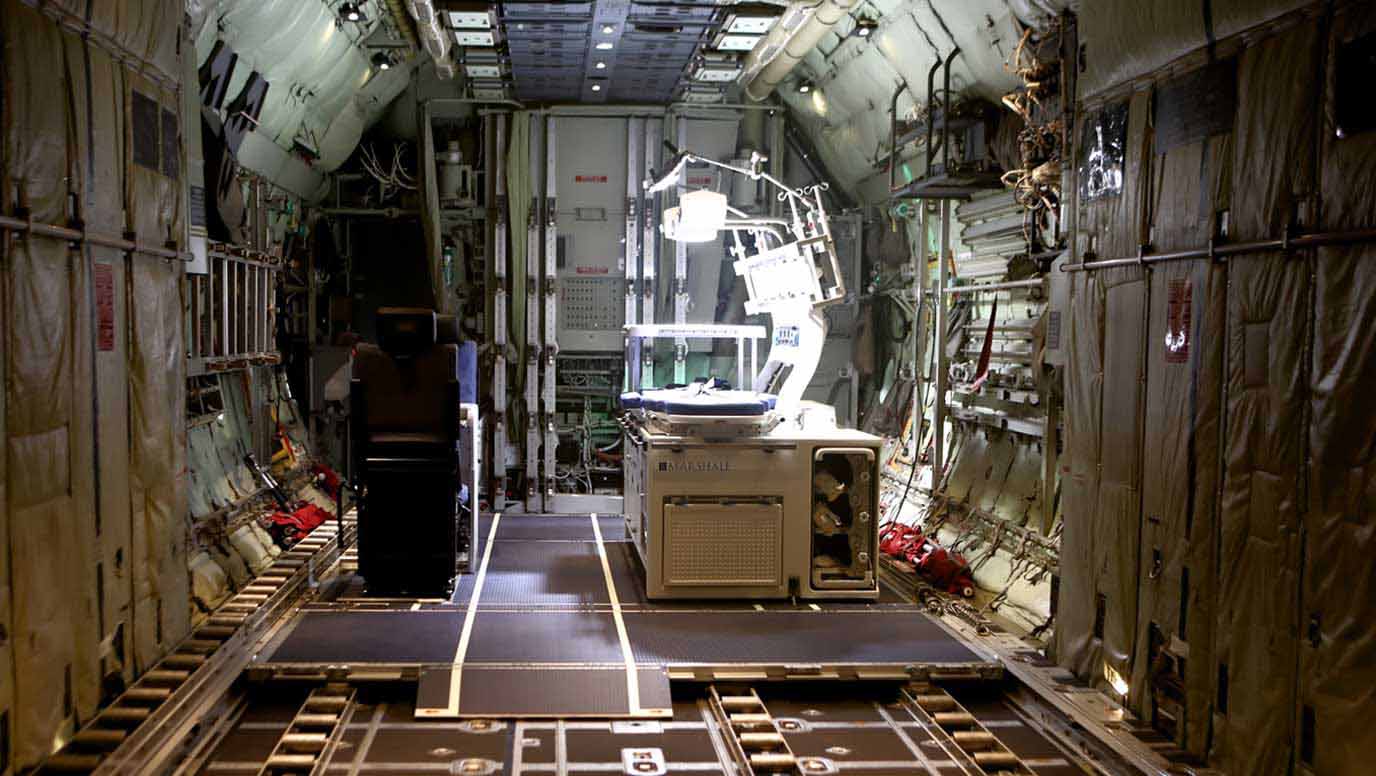Marshall AeroMedical Evacuation System builds on historic legacy

Designed, engineered, tested and assembled in-house as part of Marshall’s Adaptable Role-fit Capability (ARC) family of palletised products, AMES provides medium and high dependency patients with the best possible chance of survival during transport.
Developed alongside medical experts and fleet operators, AMES can be installed onto or removed from an aircraft in a matter of hours without any permanent modifications – an essential capability given the importance of response times in critical situations.
AMES was created to be used interchangeably on the Lockheed Martin C-130 Hercules or other tactical airlifters compatible with 463L pallets and offers a highly cost-effective means of flexibly equipping individual aircraft for medical evacuations. The system’s modular design also enables easy reconfiguration to match specific medical needs.
“We are exceptionally proud to see AMES in the hands of the Bangladesh Air Force,” said Marshall Chief Growth Officer Bob Baxter.
“As a product developed and delivered from start to finish by Marshall, AMES is a perfect showcase of our engineering leadership, our depth of platform knowledge and our enduring commitment to helping people in critical situations.”
As previously reported, the Bangladesh Air Force also recently took delivery of its fifth and final C-130J Super Hercules, significantly bolstering the nation’s airlift capacity. All five aircraft were upgraded and prepared by Marshall and will be flown in peace-keeping and humanitarian missions around the world.
Marshall’s AMES technology draws on an historic legacy: An earlier medical evacuation system, co-developed by Marshall and Nodin Aviation, was designed to convert a Scandinavian Airlines Boeing 737-700 commercial airliner into an airborne hospital.
This system has seen significant use in response to recent high-profile incidents, including evacuating Norway’s King Harald V from Malaysia in March of this year and evacuating injured Ukrainian soldiers in 2022.

